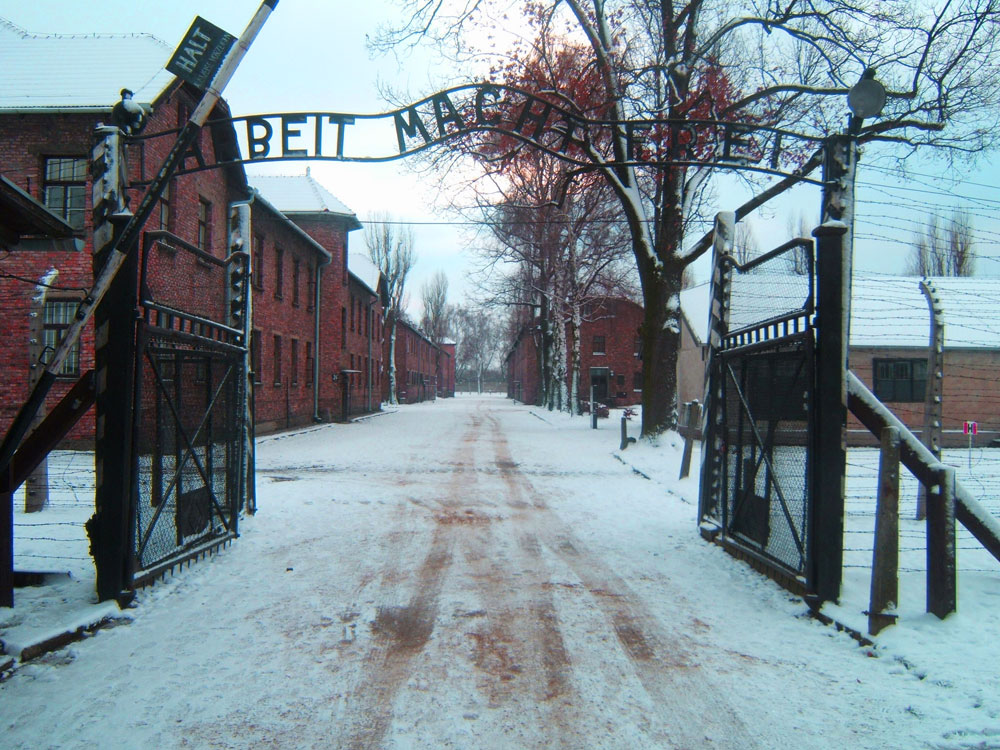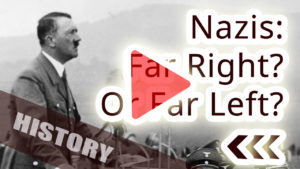A note at the beginning:
We expressly distance ourselves from the criminal, inhuman and unjust regime of the Nazi dictatorship. The historically relevant sources listed here are for the purposes of scientific research. This article is only intending to deal with the question of whether the ideology of Hitler and the Nazi movement has its roots in socialism.
Watch this on YouTube:
Were the Nazis socialists?
The short answer to this question is: Rather yes.
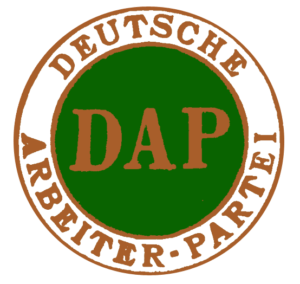
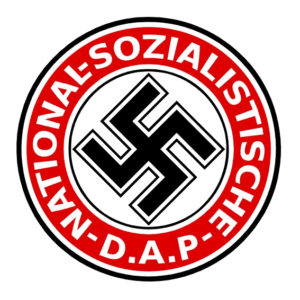
The DAP (Deutsche Arbeitspartei – German Workers’ Party), later NSDAP (Nationalsozialistische Deutsche Arbeitspartei – National Socialist German Workers’ Party) was founded by the socialist Anton Drexler. He was also chairman of the NSDAP until Hitler took over the chairmanship. Drexler supported Hitler in the then still small National Socialist movement and was considered Hitler’s mentor.
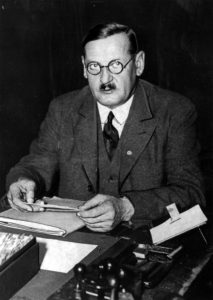
Anton Drexler
Anton Drexler wrote in his book “My Political Awakening: From the Journal of a German Socialist Worker” (Chapter 13, The Exploiter and the Exploited): “There is a slogan that unites and that is: ‘Socialism and communism in the spirit of Christ, the most outstanding character in world history‘.” .
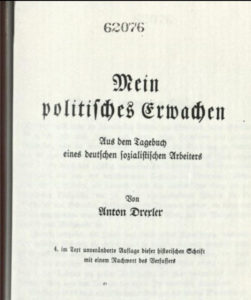
Anton Drexler – My Political Awakening
Hitler felt drawn to the ideas of the early NSDAP. He first came into contact with the NSDAP (or earlier DAP) when Gottfried Feder gave a lecture on the subject of “How and by what means does one get rid of capitalism?”
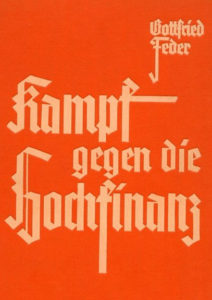
Gottfried Feder: Kampf Gegen die Hochfinanz (Fight Against Financial Aristocracy)
The socialist roots shine through throughout the history of the NSDAP. For example, the 25-point election program of the NSDAP mentions land expropriations, socialization of trusts, profit sharing in large companies, communization of department stores, breaking of the financial slavery to interest, replacing the materialistic world order, death penalty for usury and smuggling, public benefit over self-interest, or strengthening of the state apparatus. These are all clearly socialist demands.
The Nazis called each other comrades (party comrades).
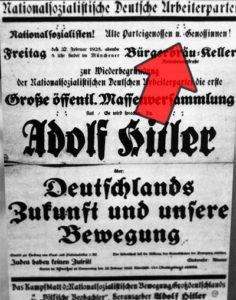
Nazi poster calling party members ‘comrades’
It is a typical term used by left-wing parties and goes back to the SAP (Socialist Workers’ Party), which was founded in 1875
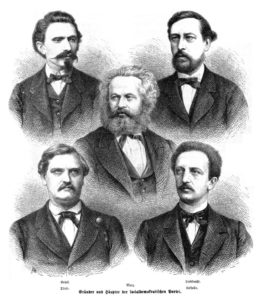
Founders and main figures of the Social Democratic Party (top: August Bebel and Wilhelm Liebknecht, middle: Karl Marx, bottom: Carl Wilhelm Tölcke, Ferdinand Lassalle)
One of the ruling parties in the Weimar Republic (basically Germany between 1918-1933) was the SPD (Sozialdemokratische Partei Deutschlands – Social Democratic Party of Germany). It was a very left-wing / socialist party. But the founder of the Nazi party (the NSDAP) complained that the situation for the workers was not improving despite the socialists’ promises.
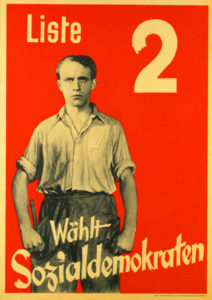
Voting poster: “Vote for Social Democrats”
Anton Drexler criticized the fact that socialist politics had an international focus and felt that this was treason, since German people were neglected. He wanted socialism to be oriented towards national interests (hence the term “national socialism” which appeared later in the name of the Nazi party). This also explains the general opposition of the Nazis to Marxism, which was more international.
According to witness accounts, media material, and old recordings, Hitler’s position was thoroughly socialist.

Otto Wagener
One high-profile witness, Otto Wagener (Hitler’s close economic adviser), described Hitler’s world view. Hitler said that the future of socialism lies in the “Volksgemeinschaft” (people’s community) and not in internationalism. The term “Volksgemeinschaft” describes a national community without classes. Hitler saw it as his task to lead the German people to socialism. According to Wagener, Hitler was of the opinion that it was time to find and walk the path from individualism to socialism. That Marx and Lenin saw the right goal, but chose the wrong path. He believed there was a faster and more efficient way to socialism without civil war. According to Otto Wagener, Hitler wanted to address all socialists, as well as the communists, and bring them from the international to the national camp. Hitler saw the greatest goal of his time to be the breaking of the reign of capital over the working class and replacing it with the reign of the working class over capital.
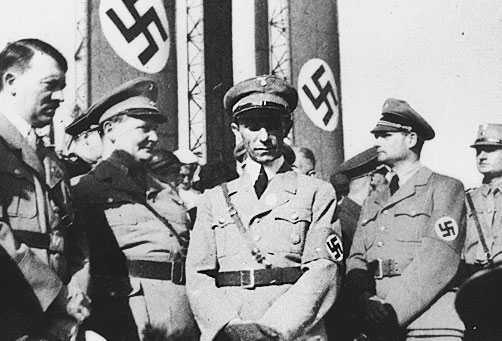
Adolf Hitler, Hermann Göring, Josef Goebbels and Rudolf Hess. Goebbels is in the center of the picture.
Josef Goebels belonged to Hitler’s inner circle. In his 1931 book (Der Nazi-Sozi: Questions and answers for the National Socialist) he wrote elaborately about the class conflict, the struggle against capitalism, the liberation of the worker with the help of socialism; “We want a Germany of the working class”; he spoke against liberalism, “Liberalism must die so that socialism can live“. He saw international socialism only as a ruse of international capitalism, and opposition to real socialism.

Es gibt keinem Sozialismus, der nicht aufgeht im eigenen Volk – loosely translates as “It’s not socialism if it’s not applied to one’s own people”
Various other sources and propaganda from the Nazis themselves confirm the clearly socialist attitude of Hitler and the national socialists (e.g. anti-capitalism, stand against the world of high finance, the liberation of the worker, opposition to unrestricted trade, community is everything, frowning upon individualism, higher taxation of the rich, company restrictions, higher pensions, etc.).
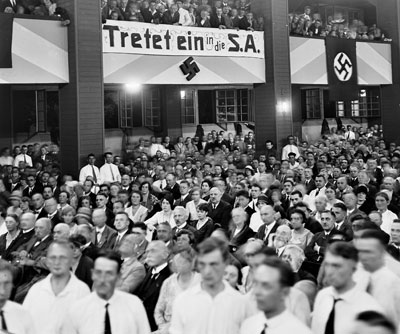
Nazi rally
As dictionary tells us, right-wing also means “opposed to socialism”. How could Hitler have been right-wing? According to this definition, Hitler was left.
One could ask: Isn’t socialism about giving power to the people rather than a dictator?
The majority of the most dangerous dictators and autocrats of the 20th century was overwhelmingly socialist. Besides Hitler, there were many despots who rose to power on the wings of socialism.
Hitler (National Socialist German Workers’ Party), Saddam Hussein (Arab Socialist Baath Party), Slobodan Milošević (Socialist Party of Serbia), Mao (Communist Party of China), Stalin (Communist Party of the Soviet Union), Erich Honecker (Socialist Unity Party of Germany), Nicolae Ceausescu (Romanian Communist Party), Gaddafi (Libyan Communist Party), Mengistu Haile Mariam (Ethiopian Labor Party), Pol Pot (Kampuchea Communist Party), Kim Ill Sung (Communist Party of Korea), and others were autocrats, dictators and fascists.
Even the inventor of fascism, Benito Mussolini, was a social activist for a long time and, after the First World War, committed to uniting the left.
Mussolini was a prominent member of the Italian Socialist Party, editor of the socialist newspaper “Avanti!” and later the owner of the socialist magazine “Utopia”.
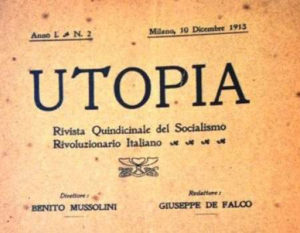
The fascism movement was founded when Mussolini met around 200 trade union socialists, republicans, anarchists, revolutionaries, ex-soldiers and dissatisfied socialists in Milan on March 23, 1919. In his last interview in 1945 with Ivanoe Fossani, Mussolini said that a statement which claimed that Mussolini’s movement was the protector of the bourgeoisie was the most shameless lie, and that he always stood for the worker.
But what about the idea that racism falls on the right side of politics?
Not according to the dictionary. As dictionary has it, right-wing politics stands for conservative and against socialist ideas.
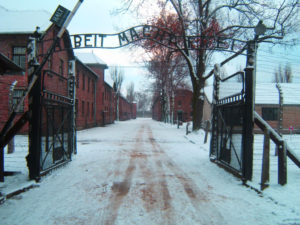
Entrance to Auschwitz concentration camp
Racist ideologies and hatred of other ethnic groups were rather common in left-wing terror regimes. The majority of Jewish publicists in Russia fell victim to Stalinist purges. Stalin also committed genocide against Ukrainians. According to estimates, it cost 7 million Ukrainian lives. Other ethnic groups also fell victim to Stalin’s tyranny.
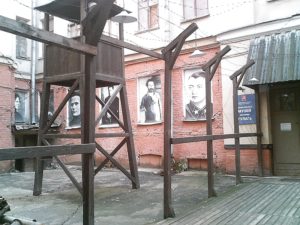
State Museum of Gulag History
Milošević (Socialist Party of Serbia) carried out ethnic cleansing in Kosovo, Mengistu Haile Mariam (Workers’ Party of Ethiopia) was convicted of genocide.
One of the most racist countries in the world today is communist China. Communists in China recently harassed black people, racism is not uncommon in the Chinese society. An exhibition in China compared African people to animals. According to official reports, the Beijing government recently placed over 1 million Uyghur Muslims in “concentration camps”. The UN expressed their alarm over reports of organ harvesting from minorities held in detention.
Why do people think Nazis were on the right side of the political arena?
After the war the winners might have tried to divert attention from the fact that the Nazis had their origins in socialism, perhaps also to take into account the sensitivities of the victorious Soviet Union.
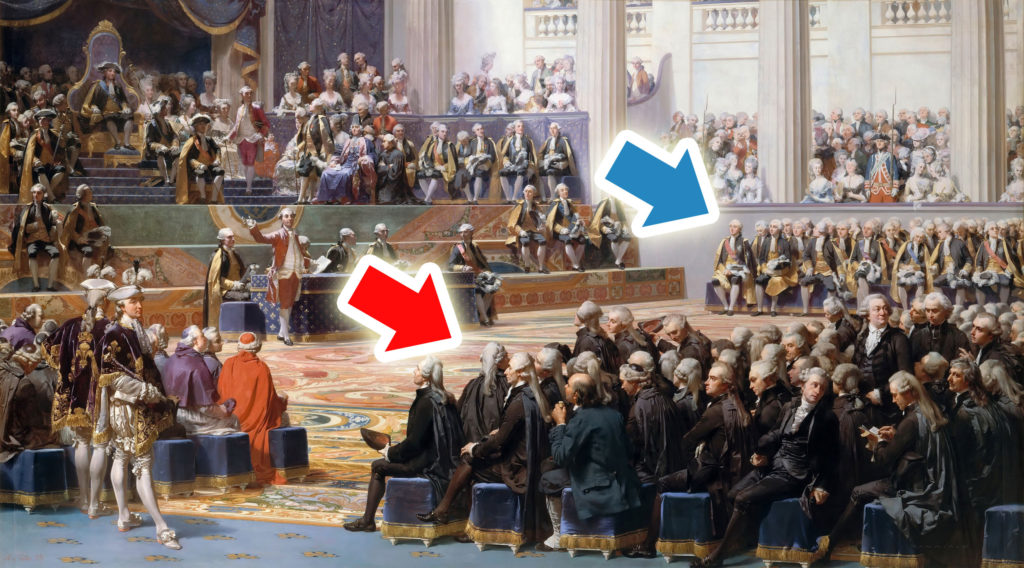
Originally the term “right” and “left” comes from the seating arrangements in the French parliament during the 1789-1799 revolution. On the right sat those who were in favor of maintaining classes / monarchy, and on the left sat those who did not want class system and monarchy. The NSDAP was against a class society and for the abolition of classes. The NSDAP wanted a classless national community (Volksgemeinschaft). Hitler hated the Habsburg monarchy.
The Nazis should really be called left-wing.
Conservatism on the right stands for the preservation of the existing order, the left is in favor of socialistic reforms. From this point of view, too, the Nazis are to be classified more on the left, as they overturned the existing system and wanted to create a new socialist order.
From today’s perspective, the right also represents the concept of less state and more economic freedom for the individual. This was undesirable to the Nazis. National socialism was all about more power to the state and stronger regulation of the individual. This point of view also places the Nazis more on the left side.
During the Nazi times, communists and socialists were arrested and in some cases even murdered. How to explain that?
The Nazis made a distinction between international socialism / communism and national socialism / communism. They viewed international socialism / communism / Marxism as a threat to the nation. They felt betrayed by the red socialists (also called Jewish bolshevists by the Nazis).
In the Weimar Republic, the Social Democrats (SPD) were in power. The SPD were far-left and supporters of a “socialist republic”. But the Nazis were of the opinion that the socialism promised by the Social Democrats is somehow not happening. They protested that the Social Democrats (SPD) were focused too much on international issues instead of their own people.
This is why the idea of national socialism took hold. The national socialists wanted their own socialism, which would primarily serve their own people (hence the name National Socialist German Workers’ Party).
The effort to eliminate other (supposedly red / Jewish) forms of socialism or communism ultimately led to the arrests of the supporters of such movements (including the social democrats).
It is also worthy mentioning that leaders of other left-wing parties did not think twice about fighting each other. So there is no contradiction when Hitler had (international) socialists, communists, Marxists or social democrats locked up. There were also “purges” within the National Socialist Party, just like with other socialist / communist parties throughout history.
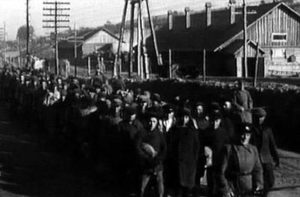
Gulag
Stalin had leftist groups arrested that didn’t belong to his party, such as the left Social Revolutionaries, and had them shipped off to Russian concentration camps (gulags). There were many similarly dispatched victims even among his fellow revolutionaries within the Russian communist movement. Cuba, North Korea, China, and other socialist dictatorships followed like paths.
Did the Nazis only talk about socialism and did not follow up with their actions?
The national socialists put in practice a social program which benefited the poorer in particular and which was not entirely dissimilar to the demands of today’s left:
- Pensions increased during the war by 15%
- in 1941, pensioners received full health insurance for a symbolic contribution of 1 Reichsmark
- Pay for working night shifts or on holidays was made exempt from tax
- Sick pay was introduced
- Fees for picking up a medical prescription were halved
- Measures were taken to protect debtors as well as tenants
- Steps were taken to increase the number of available jobs
- Married couples with children received increasing tax benefits
- Child benefits were introduced
- Poorer families received subsidies to be able to afford school fees for their children
- Company and corporate tax increased from 20% to 40% (and during the war climbed to 55%)
- Payroll tax was never increased despite the war
Isn’t there a consensus among politicians, contemporary witnesses, and historians that the Nazis were political right?
A renowned German historian and political scientist Arnulf Baring said, “The Nazis were not right-wing, the Nazis were a leftist party!”
Germany’s former Federal Minister Franz Josef Strauss (who also served in the Wehrmacht in WWII) said: “We will not be silent in this dispute, because after all, national socialism was also a variant of socialism. … It got its momentum from the millions of socialists who abandoned SPD as voters at the time. “
Well-known German political scientist, historian, and journalist Dr. Götz Ali describes how the National Socialists secured the support of the population from 1933 until well into the war years with their social policies (higher taxation for the rich, sick pay, child benefits, pension reforms, higher pay for women, protection against debt collectors and other social advancements.)
Edmund Stoiber (former Germany’s Minister-President in 1993 – 2007) mentioned: “We have not made it clear in the past that national socialists were primarily socialists and that national socialists were people who, by and large, strived for and implemented collectivist solutions.”
Erika Steinbach (former member of the German Parliament): “The Nazis were a left-wing party.”
Willy Brandt (former Chancellor of Germany): “We must recognize the socialist element in national socialism in the thinking of its followers.”
Victor Klemperer, who lost his position as a professor under the Nazi regime because he was a Jew, wrote in his book: “National socialism has now become completely or almost completely identical with Bolshevism.”
Margaret Thatcher: “Nazism (national socialism) and communism (international socialism) were but two sides of the same coin.”
“Communism accounted for approaching a hundred million deaths. It enslaved the East, while its first cousin socialism impoverished much of the West. Nazism – that other brand of socialism – and its tamer forbear Fascism killed about 25 million. All have left scars on our societies which perhaps will never fully heal.”
Were the Nazis really left-wing?
The Nazis were a left-wing party. And in the light of this, it would make more sense for the far-left groups to protest against themselves instead of groups that are conservative or patriotic.

